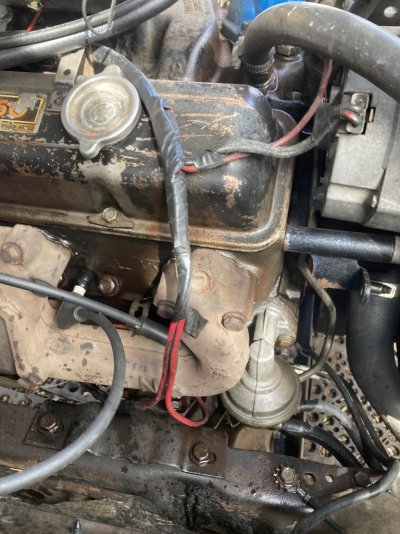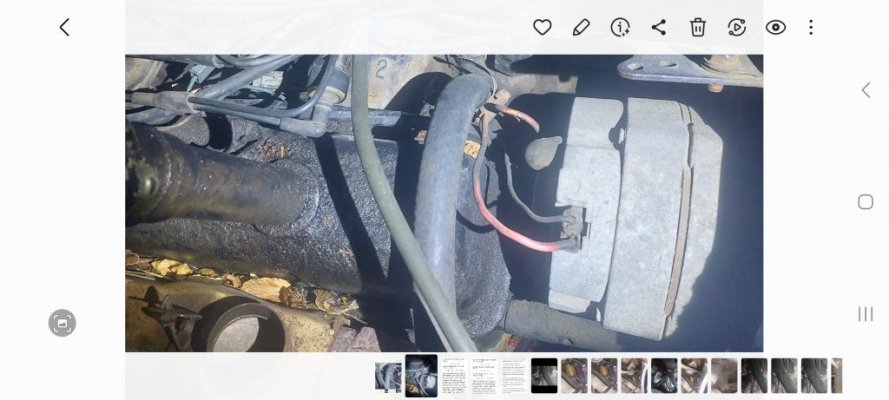Johnny Atomic
Full Access Member
- Joined
- Oct 18, 2019
- Posts
- 98
- Reaction score
- 248
- Location
- Little Rock AR
- First Name
- Johnny
- Truck Year
- 1983
- Truck Model
- Sierra Classic 1500
- Engine Size
- 350
I have questions about the large cable out of the alternator on the "bat" connector. I see on some trucks they have a large gauge cable from the bat connector to the battery positive. I have an 1983 305 w/ quadradjet. Mine has a cable from the bat connector to same lug on the starter as the large cable going to the battery. I don't think this is original to the truck. It runs down the front of the block and routed underneath the exhaust manifolds to the starter. This looks dangerous to me, I put some split loom around it to protect it from chafing but looks like it could be easily melted from the exhaust heat. I've read that some run this cable from the bat connector, down behind the valve cover, and down the rear of the block through a metal tube to the starter. The 1983 light truck shop manual is not very clear about what the bat terminal is connected to for the LE9, and the routing for that connection. From reading the manual it sounds like the connection from the bat connector goes to the bulkhead.
What was the "bat" connector originally connected to on the other end?? Which way was it routed? What are the advantages and disadvantages of the different methods? What cable would you use? What is the best way to rout it?
What was the "bat" connector originally connected to on the other end?? Which way was it routed? What are the advantages and disadvantages of the different methods? What cable would you use? What is the best way to rout it?






